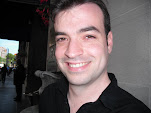Talking of Joyce by Umberto Eco and Liberato Santoro-Brienza (University College Dublin Press 1998)
As of now I am only a third of the way through my elephantine edition of Ulysses which stands at over 1,200 pages so I decided to fit in this small and rather interesting volume of literary criticism on the works of James Joyce.'Talking of Joyce' is a collection of lectures one by Umberto Eco on Joyce's search for the perfect language given at University College Dublin on 31st October 1991, on the anniversary of that institutions conferral upon Joyce of his Bachelor of Arts and one given four years later by Liberato Santoro-Brienza on Joyce's position in the Italian literary tradition.
Umberto Eco's lecture entitled 'A Portrait of the Artist as a Bachelor' argues that the unique seminal idea of Joyce's career was to pursue grammar as 'the primary science. The rest of his life was devoted to the invention of a new grammar, and his quest for artistic truth became the quest for a perfect language'. He draws upon the Book of Kells, an example of the labyrinthine Hisperic aesthetics, as an influence on Joyce. "The book is a luscious vegetation of interlace, of stylised animal forms, of small simian figures amidst impossible foliage that covers page after page...the book is the lucid vertigo of a language that is trying to redefine the world while redefining itself, with the full realisation that - in a dark and uncertain age - the key to the revelation of the world is not to be found in a straight line but rather within the labyrinth".
Umberto Eco suggests that, for Joyce, the key to his aesthetic theory is not trying to find some pre-Babelic language, the language with which Adam spoke to God but pursuing a language that delights in imperfect complexity. 'To understand that human languages are open, imperfect and capable of begetting that supreme imperfection that we call poetry, constitutes the only aim of any quest for perfection'.
Liberato Santoro-Brienza views Joyce's literary output as a dialogue between Joyce, Aquinas, Dante, Bruno, Vico and Svevo and he traces all the veiled and not so veiled references to these authors in his works, most interesting are the links to Vico and Svevo. Giambattista Vico, the Italian philosopher, traced historical development in his Scienzia Nuova as a series of cycles, the Divine, the Heroic and the Human.When Joyce wrote Finnegan's Wake he divided it into four cycles, three long and one short, three representing each of Vico's cycle and the fourth being a reflux that draws the book back to the beginning again. Finnegan's Wake is essentially a dialogue between Joyce and Vico and demonstrates 'Vico's and Joyce's treatment of language. Joyce was acutely aware of living in an age which had witnessed the abnihilsation of the etym and he believed it was the job of the artist to build a new world of language out of the ruins of the old'. And so when the Danish author Tom Kristensen needed help with Finnegan's wake, Joyce instructed him to first read Vico.
Joyce's relationship with the author Italo Svevo is enlightening when it comes to understanding the character Leopold Bloom from Ulysses. A 25 year old Joyce met the middle-aged Svevo when the latter required English lessons to help him with some business venture that had led him to open up shop in the UK. The Jewish Svevo had two published novels already but to little renown or praise and Joyce was able to use his connections in Trieste and Paris to greatly increase his reputation and Svevo was to remain Joyce's only true author/friend. The relationship between the two closely echoes the relationship between the mature Jewish Leopold Bloom and the naive, fresh from university Stephen Dedalus in Ulysses with 'Svevo's maturer, objective, peaceable temper reacting upon the young man's fiery mantle'.
The lectures are by two Italians in English about an Irish author who preferred speaking in Italian and speaking as someone with Italian heritage it was rather charming reading about Joyce's relationship with Italy by two people who with a sense of camaraderie refer to him as Jim. Reading Joyce is a mixture of pure joy at such ingenious structure in the face of chaos and frustration as one attempts to see the wood for the trees. Reading books like 'Talking of Joyce' both act to increase one's wonder at the genius of Joyce's creation and give me a keen sense of my own ignorance for all that I don't see in his works. However Joyce probably wouldn't be so hard on me because in recognising the complexity of his own text he said that to understand it fully you would need to be an 'ideal reader suffering from an ideal insomnia'.
This is a small book so don't expect to find all the answers to help you unlock the secrets of Joyce's labyrinthine texts but it will give you an italianate slant on the Irish hero.
Definitely worth a read.
4/5
Berta Dávila: The Dear Ones
9 months ago







